Economics > QUESTIONS & ANSWERS > University of California, Berkeley ECON 119 Econ119+f14+PS1+solutions (All)
University of California, Berkeley ECON 119 Econ119+f14+PS1+solutions
Document Content and Description Below
Problem Set #1. Due in lecture, no later than 3:50pm, Tuesday, September 9, 2014. Solutions Problem 1. Vera has reference-dependent preferences over mugs, c1, and money, c2 — with reference poin... ts r1 and r2 respectively — represented by the following utility function: U(c1, c2; r1, r2) = v(6c1 − 6r1) + v(2c2 − 2r2), where v(x) = x for x ≥ 0 v(x) = 2x for x ≤ 0 (a) Vera has $100 and three mugs, and over time this endowment of mugs and money has become her reference point. What is Vera’s buying price, Pb, and selling price, Ps for a mug? Draw a graph with mugs on the horizontal axis and money on the vertical axis and use the prices you just computed to plot the indifference curve that passes through the point (3, $100) when Vera’s refernce point is (3, $100). This problem is almost identical to the one we did in lecture. Vera’s reference point is r1 = 3, r2 = $100, which we can just simplify to (3, 100). Thus, we want to find Pb such that U(3, 100; 3, 100) = U(4, 100−Pb; 3, 100). Plugging these values into the definition of the utility function we get v(6(3 − 3)) + v(2(100−100)) = v(6(4−3)) +v(2(100−Pb −100)) As usual, staying at the reference point gives a utility of zero for both mugs and money. Meanwhile, buying a mug is a gain in mugs and a loss in money, so plugging in the specific functional form of v(·) we get 0 + 0 = 6 − 4Pb. Solving this we get Pb = 1.5. For the selling price, keep in mind that we are not endowing her with a mug first, like in the experiment, but simply asking how much she would sell one of her mugs for. So the reference point is still (3, 100), and what we want is Ps such that U(3, 100; 3, 100) = U(2, 100 + Ps; 3, 100), which is the same as saying, v(6(3 − 3)) + v(2(100 − 100)) = v(6(2 − 3)) + v(2(100 + Ps − 100)). Since Vera is now in the domain of losses with respect to mugs and gains with respect to money, this becomes, 0 + 0 = −12 + 2Ps, so Ps = 6. The graph should look figure 1 below. Econ 119, Fall 2014 Prof: Dan Acland Problem Set #1 Page 2 (b) One day, Vera unexpectedly receives a package containing a mug, which, mysteriously, is exactly the same as the three she already owns. Time passes, and Vera gets used to having four mugs. In addition, and very unfortunately, she loses four dollars. But, eventually she gets used to that too, and her reference point adapts accordingly. Compute Vera’s buying and selling prices and plot the indifference curve that passes through her new endowment, g [Show More]
Last updated: 1 year ago
Preview 1 out of 6 pages
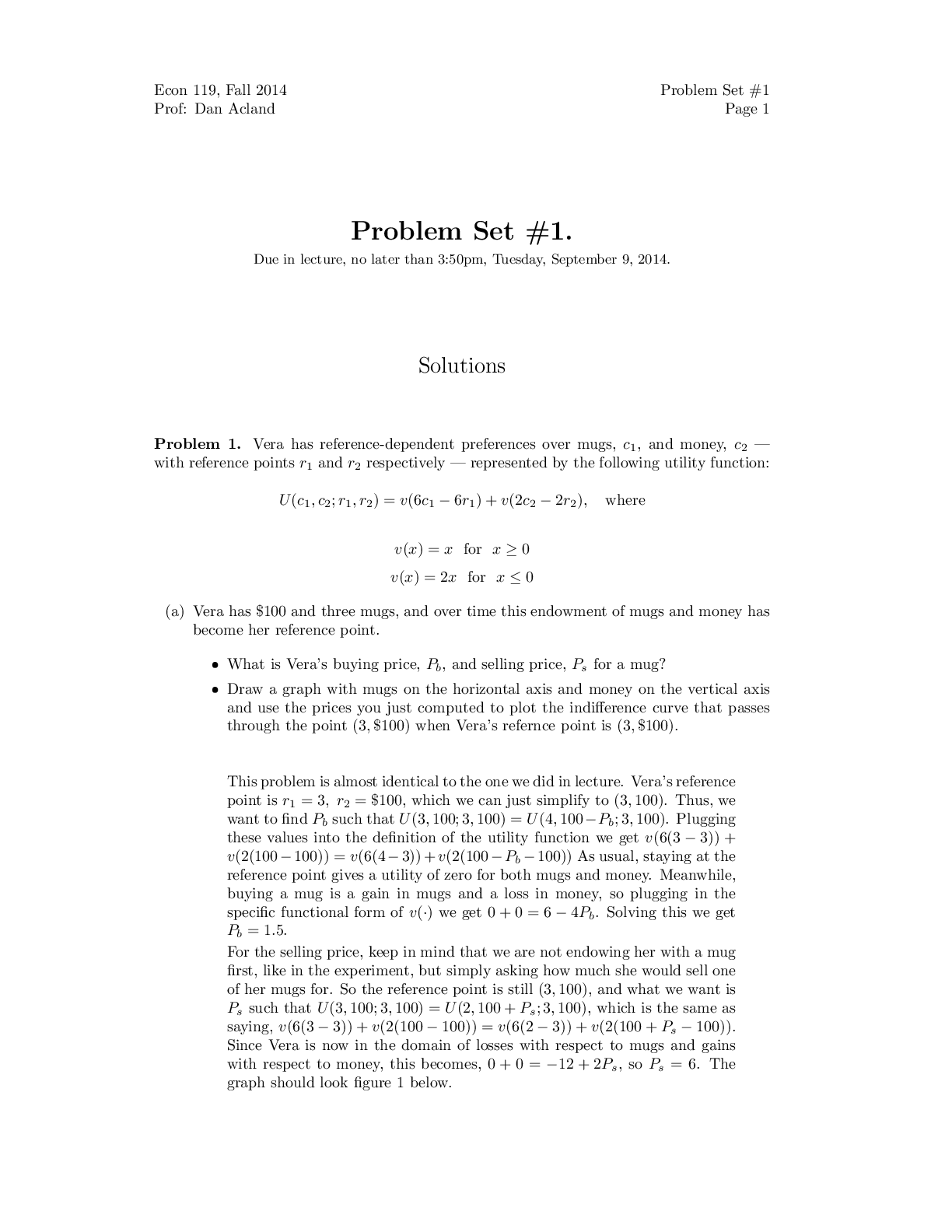
Reviews( 0 )
Document information
Connected school, study & course
About the document
Uploaded On
Sep 19, 2021
Number of pages
6
Written in
Additional information
This document has been written for:
Uploaded
Sep 19, 2021
Downloads
0
Views
196



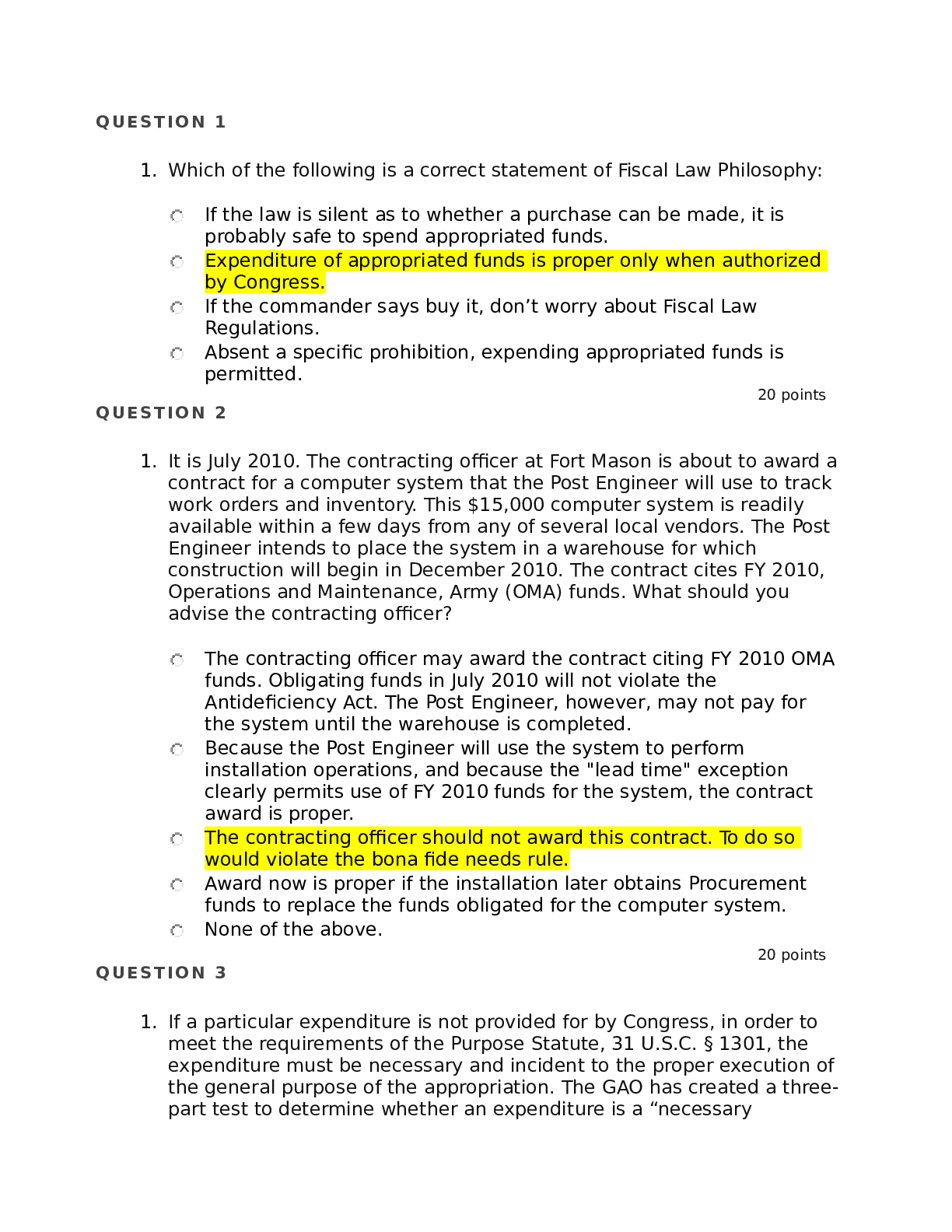
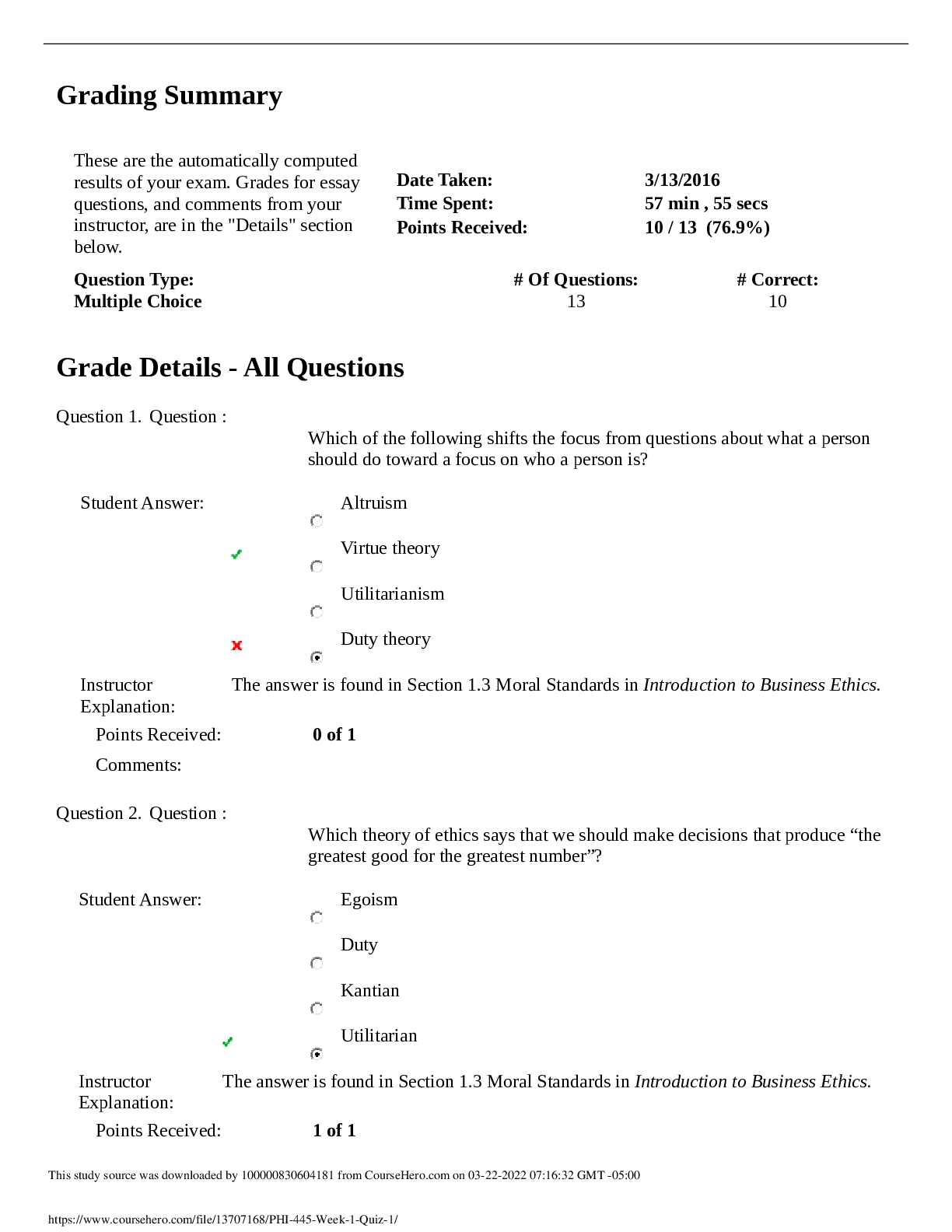
.png)
.png)
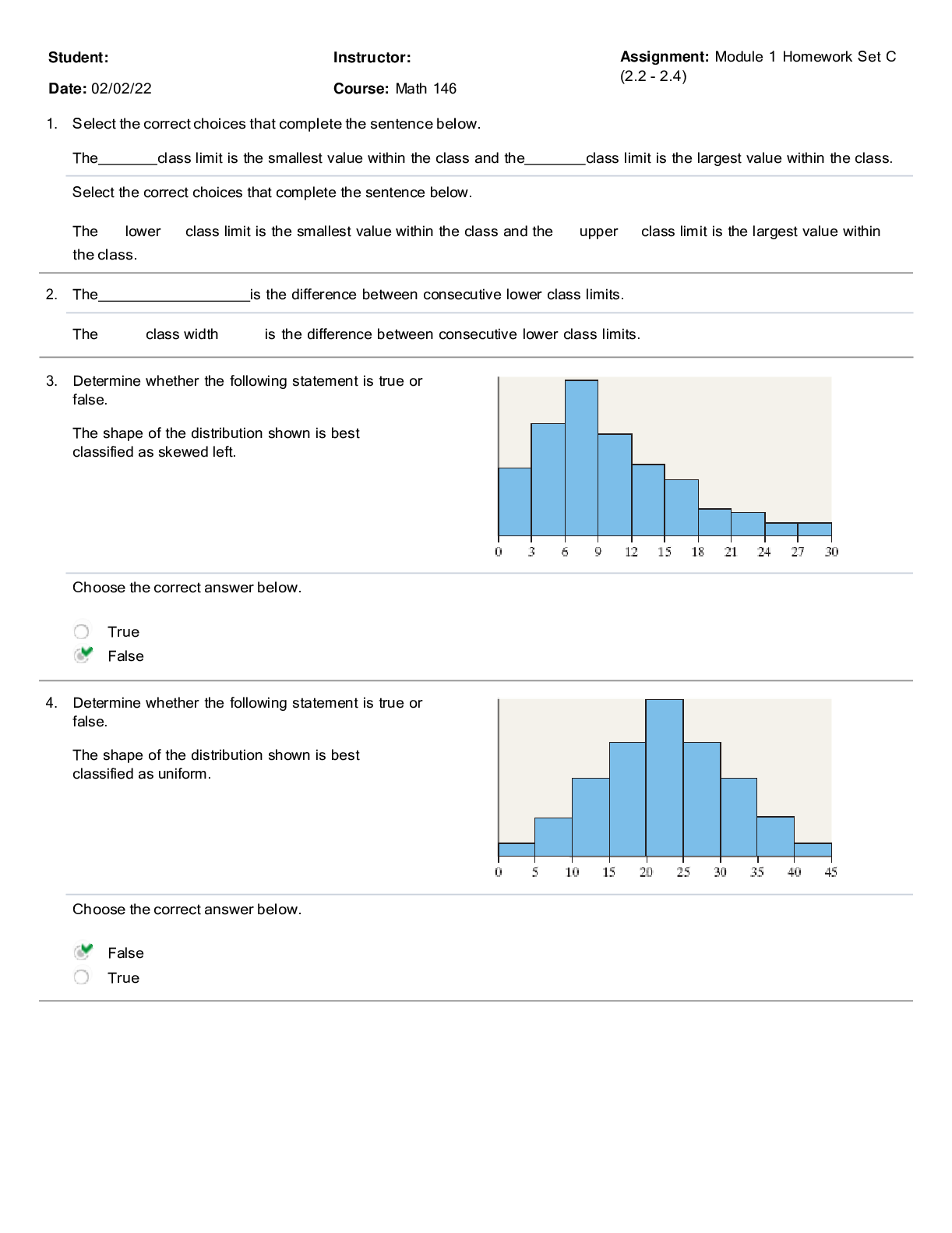
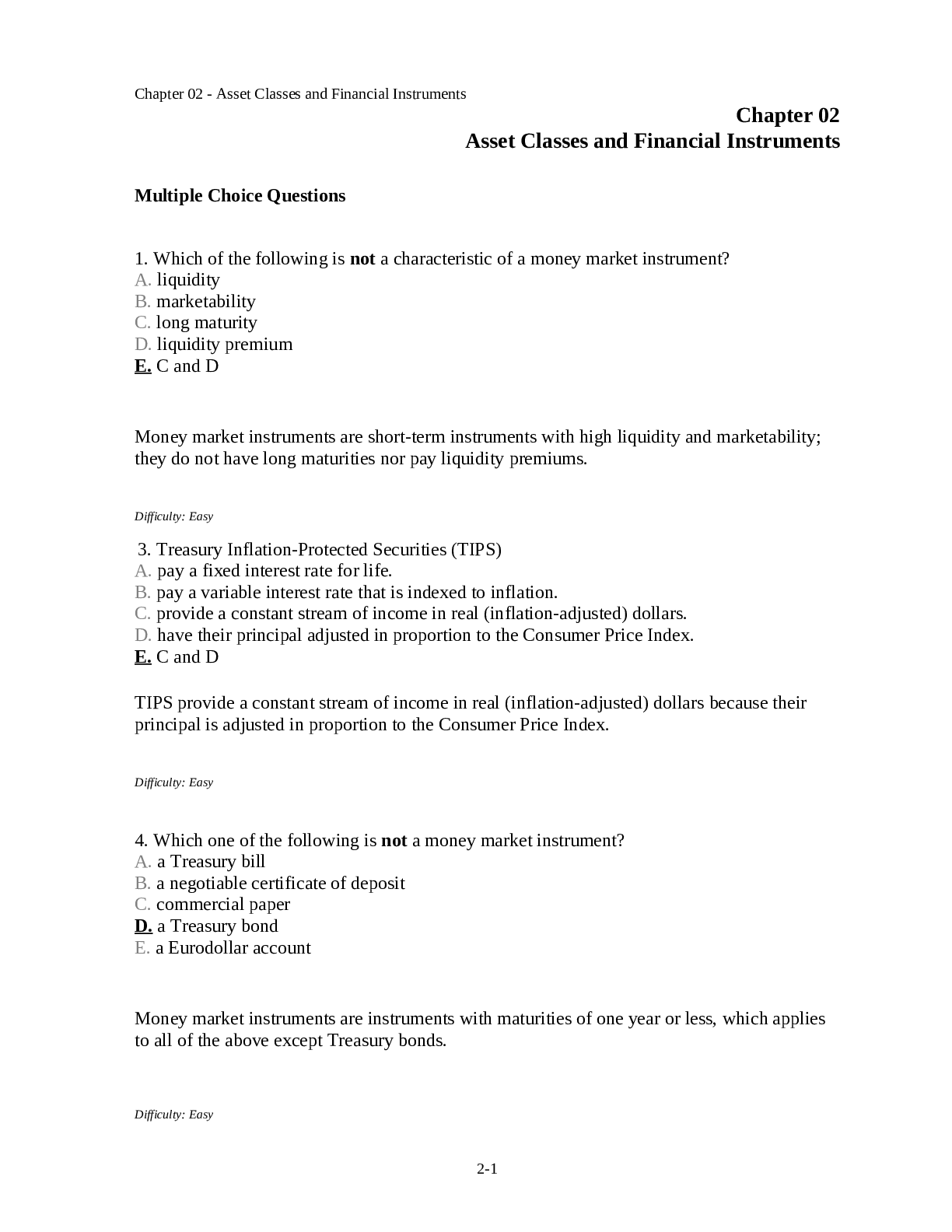
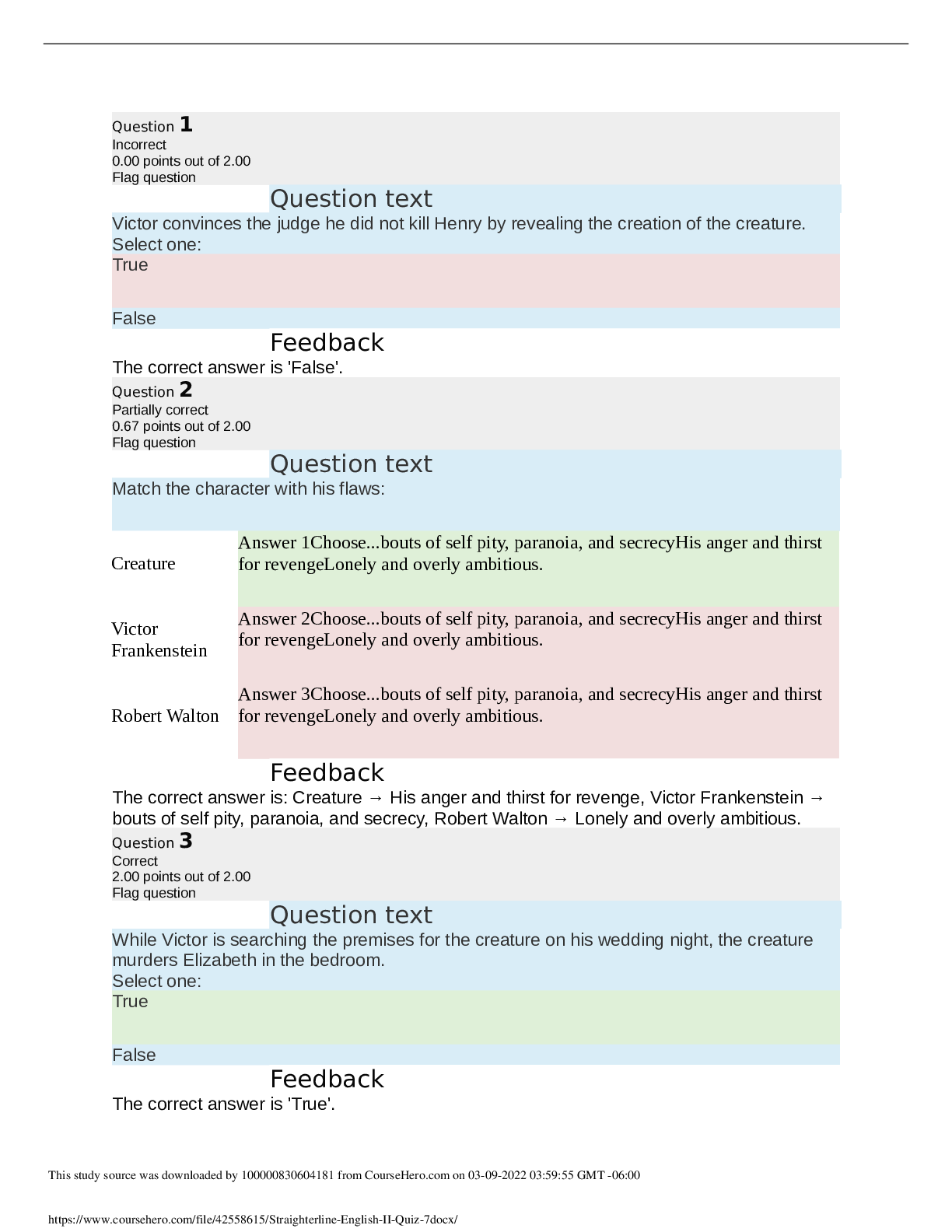

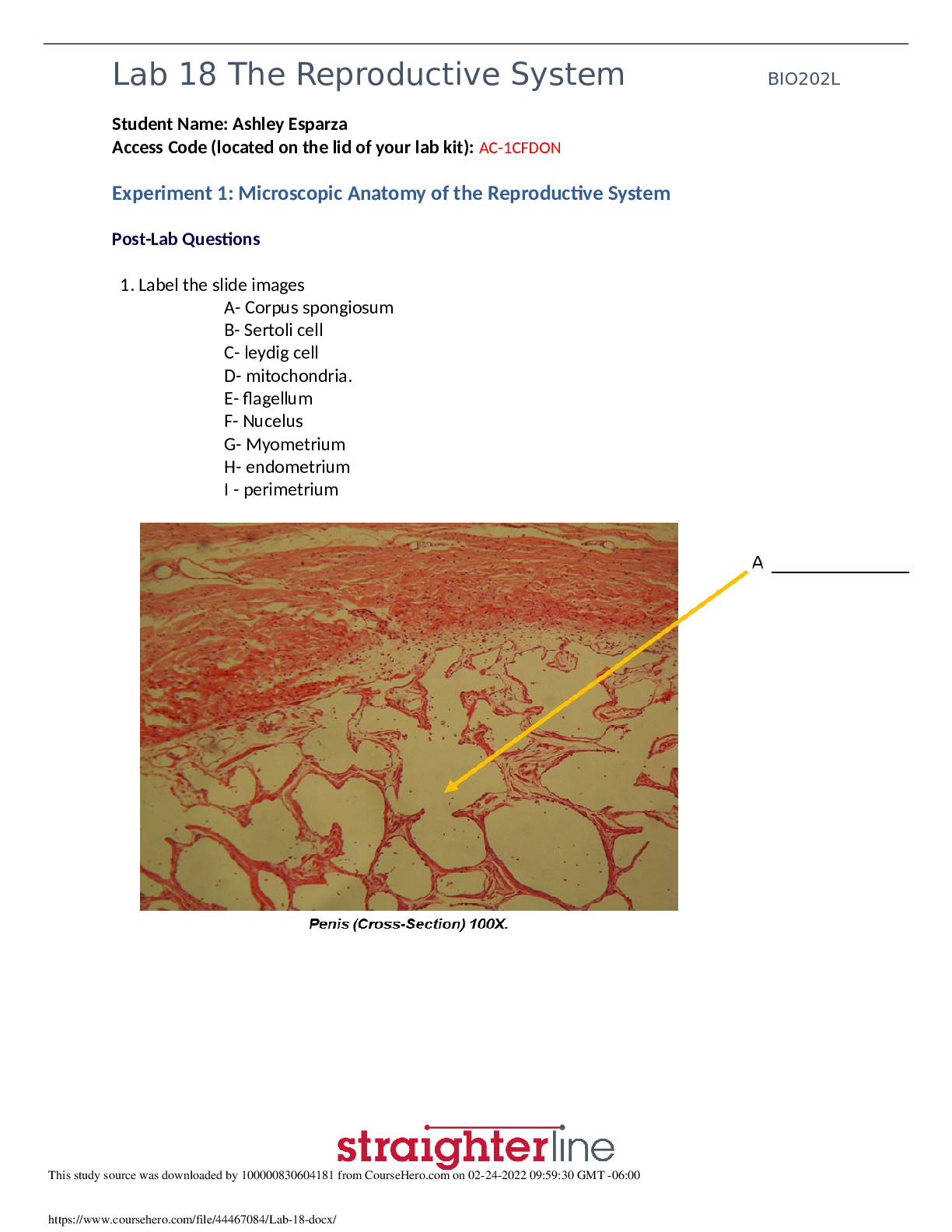
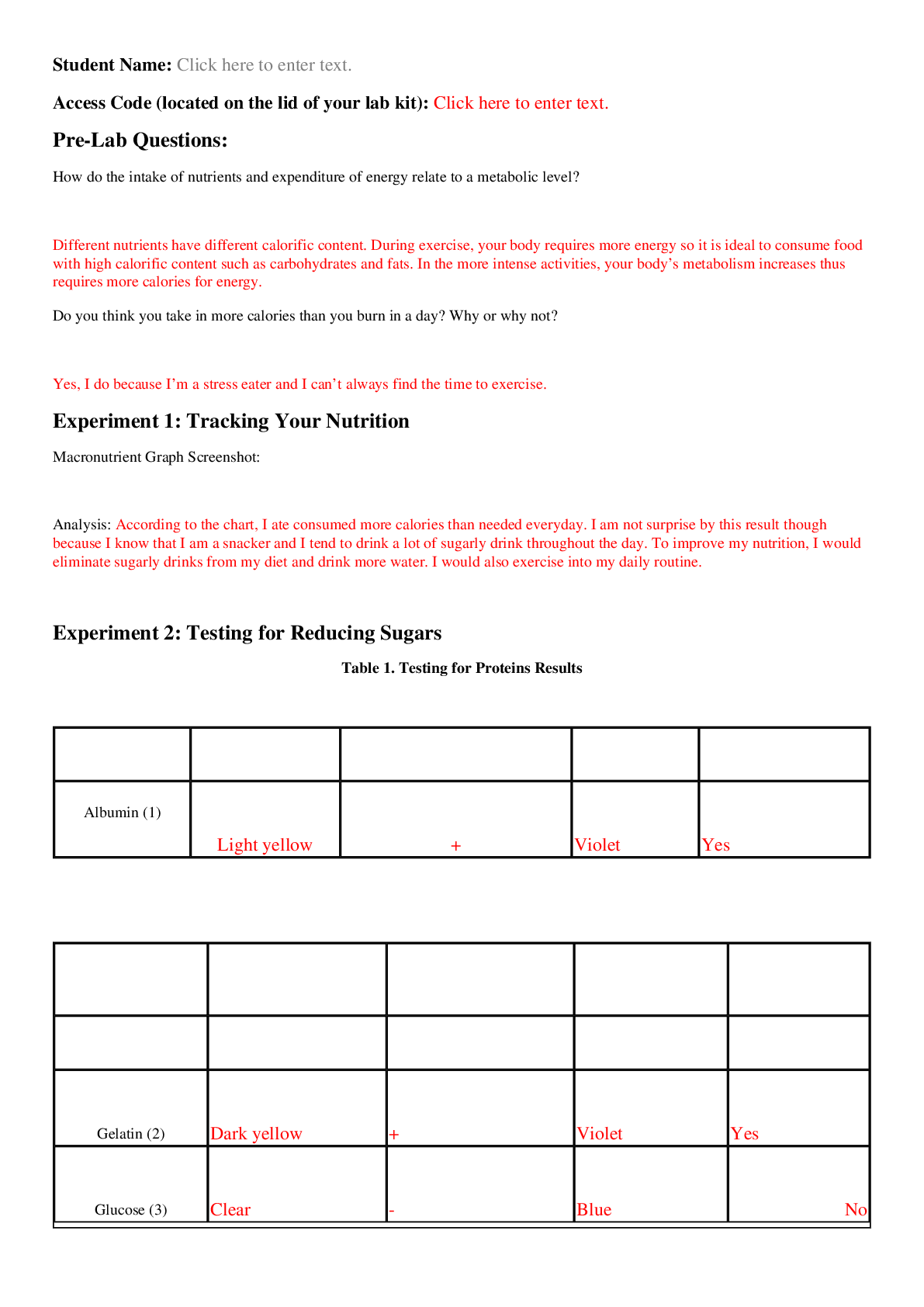
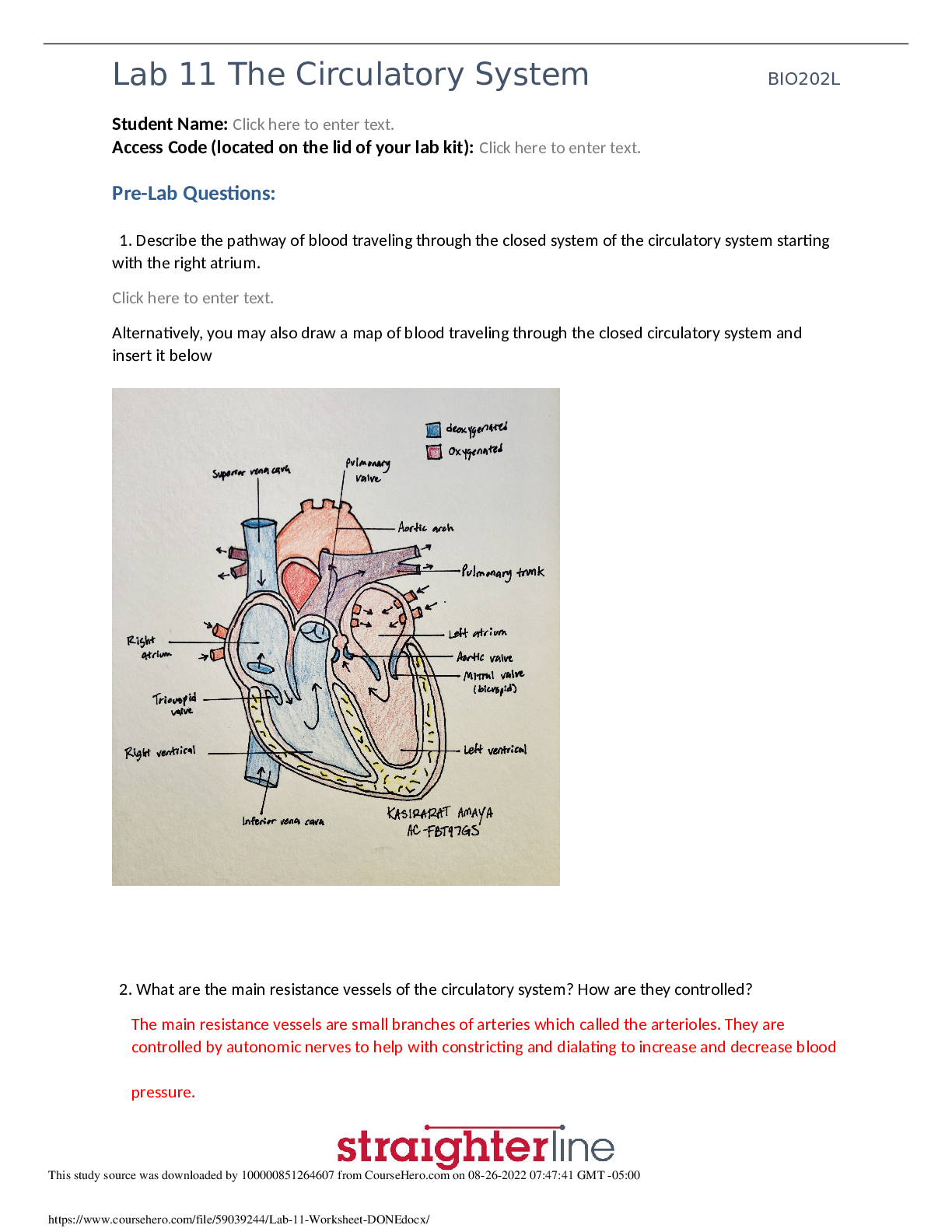
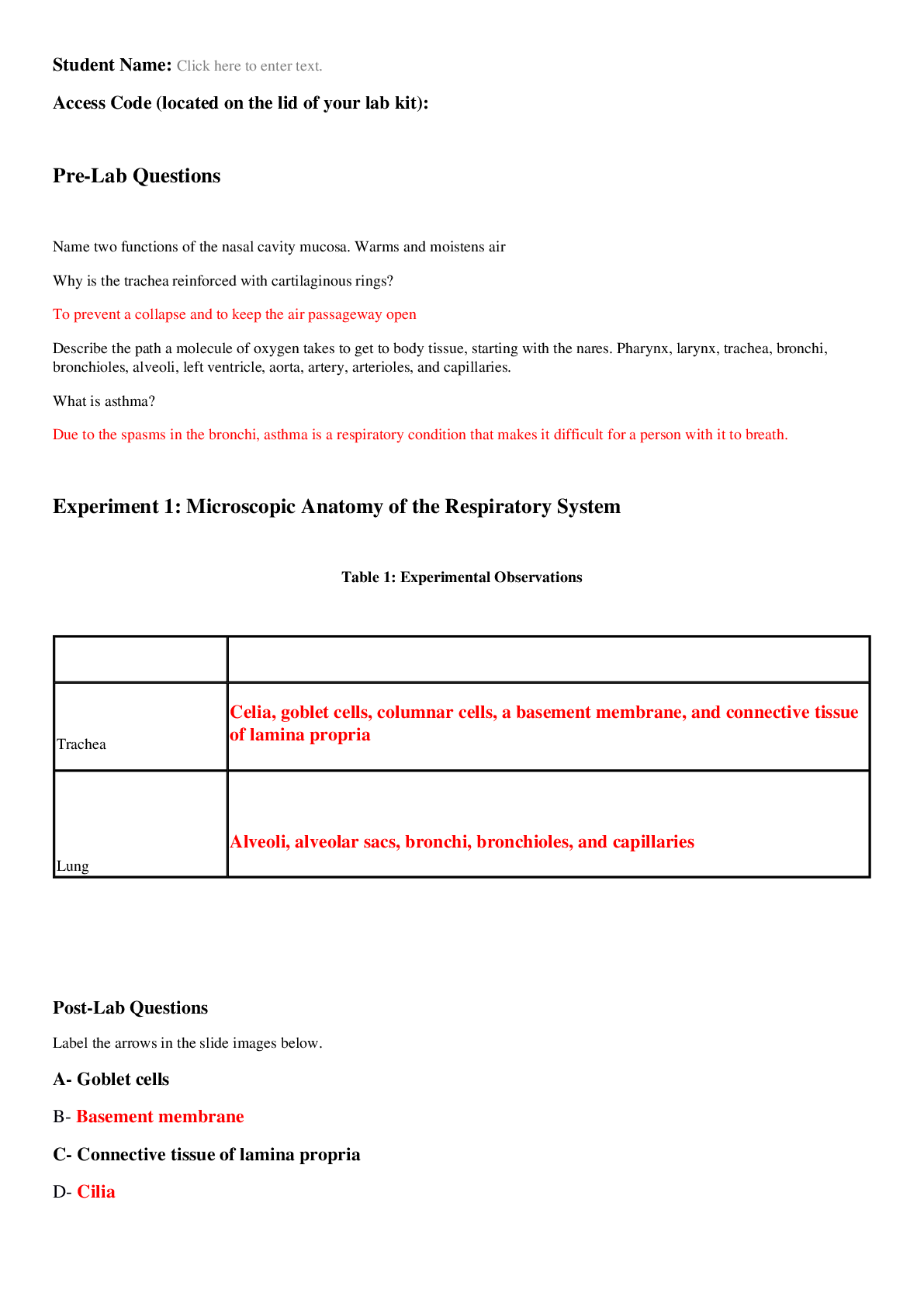
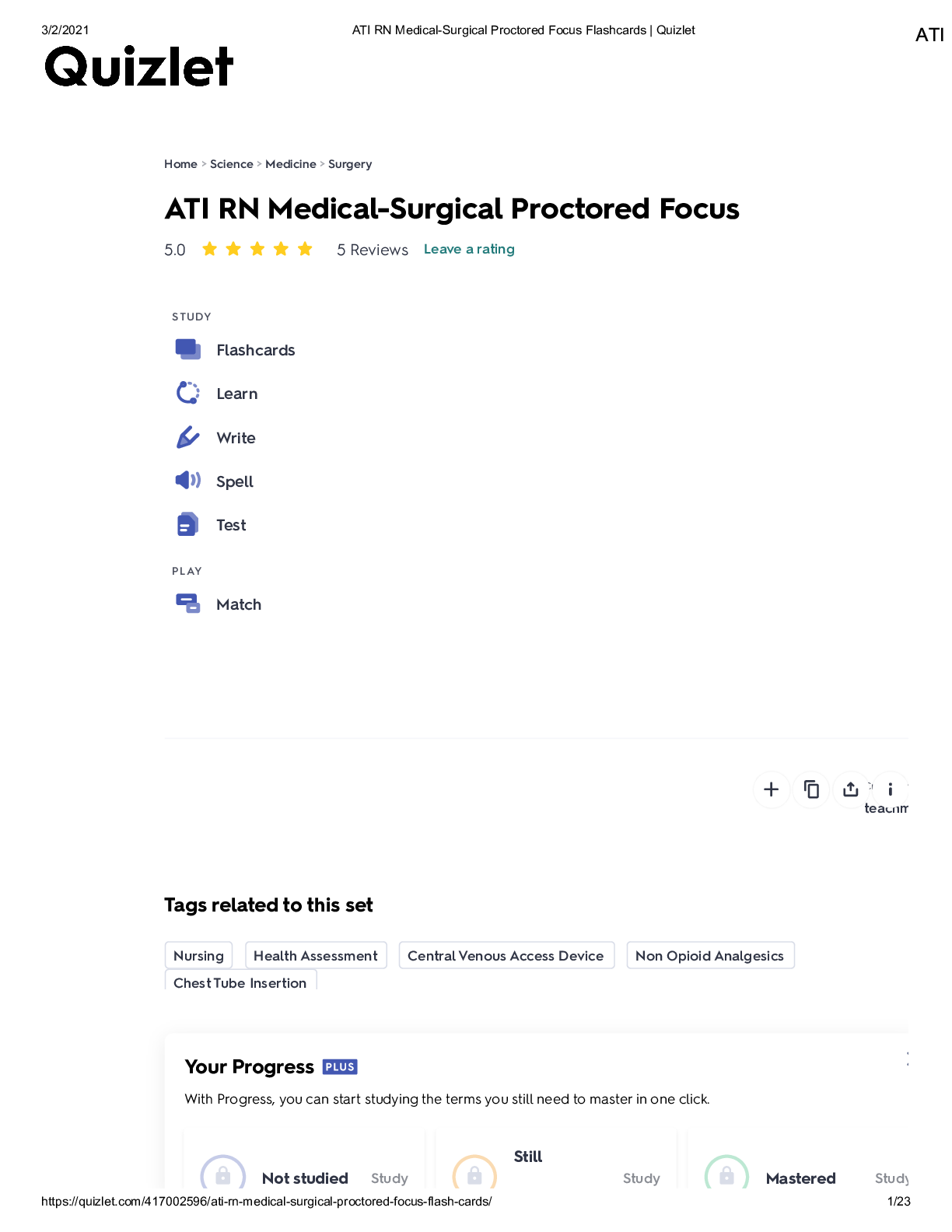
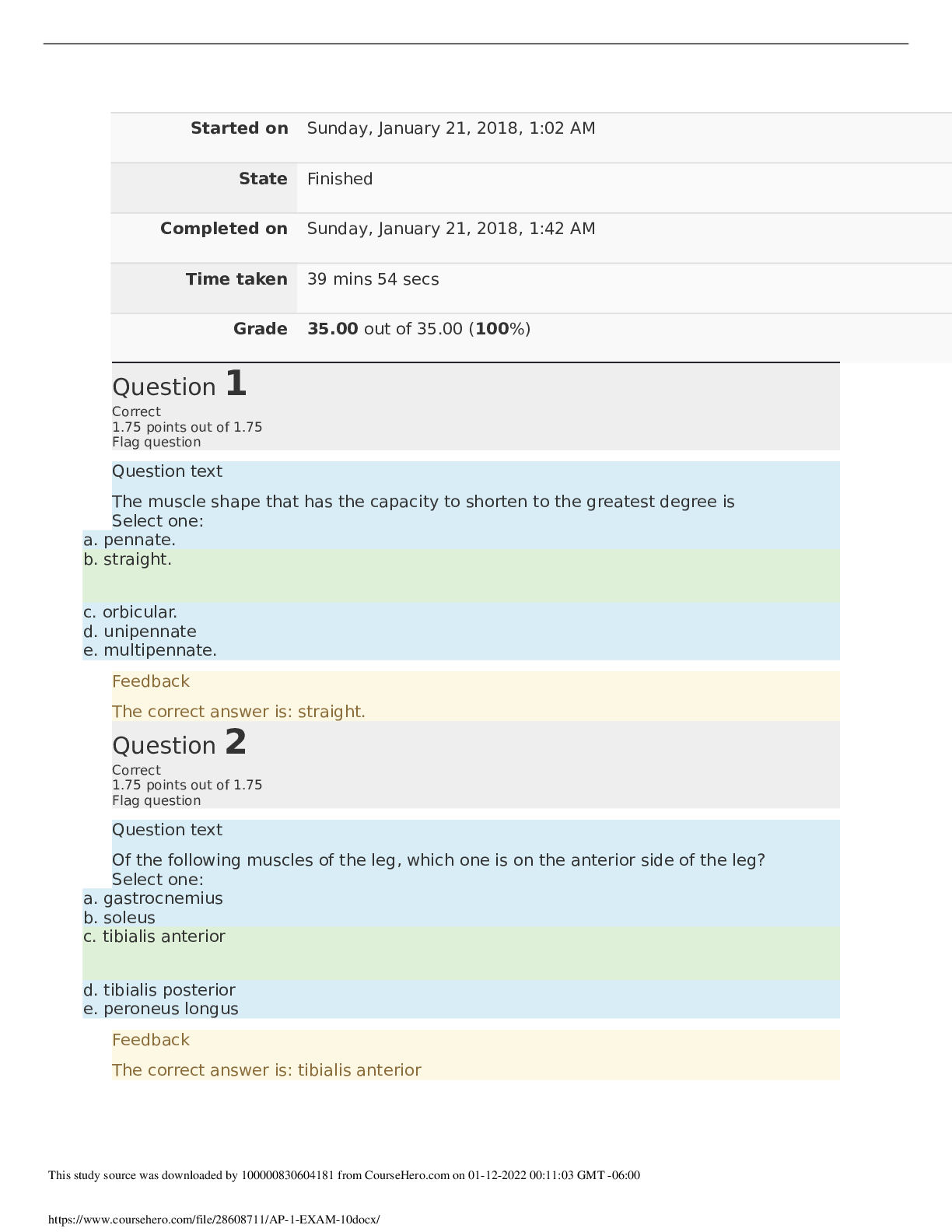

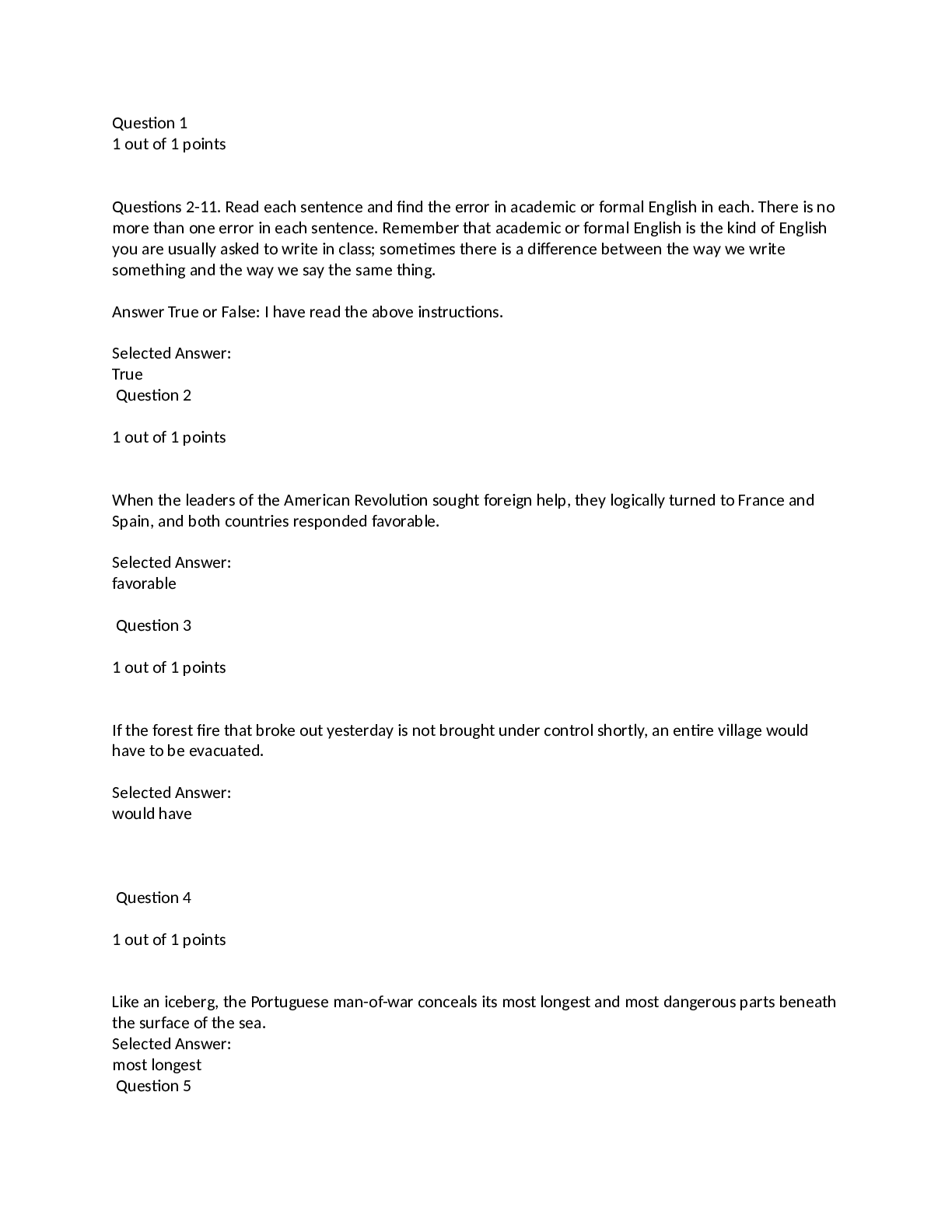
.png)
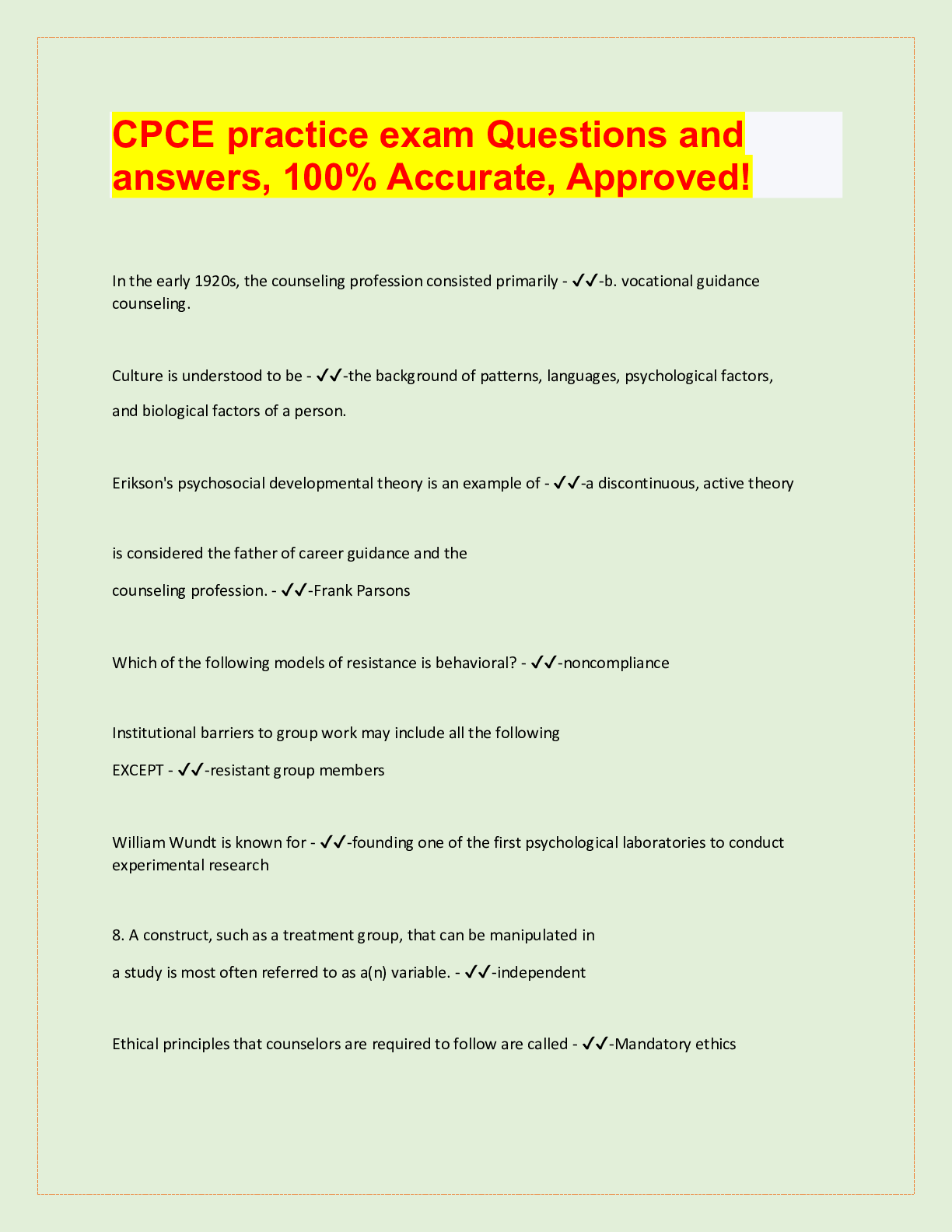
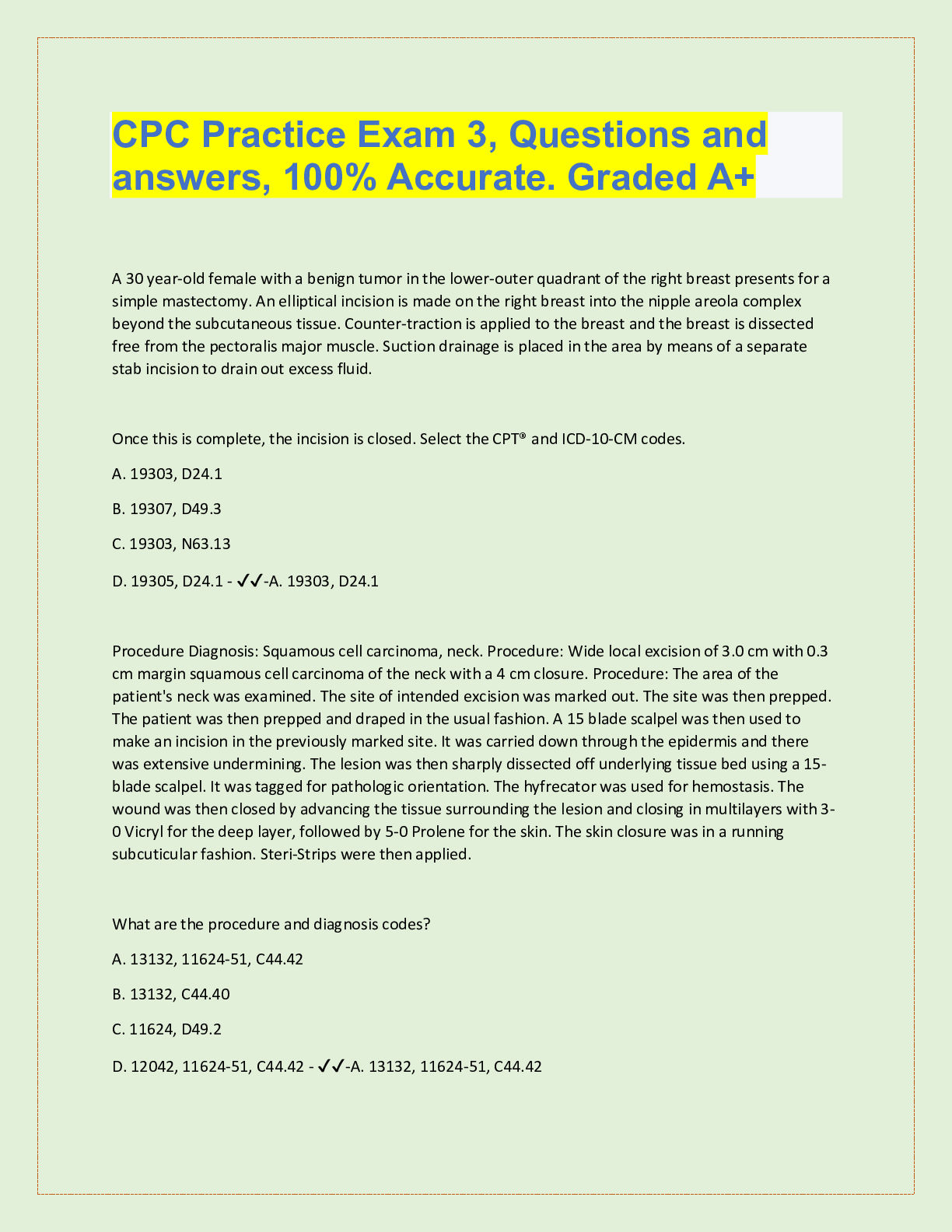
.png)


.png)


.png)

.png)
.png)
.png)


